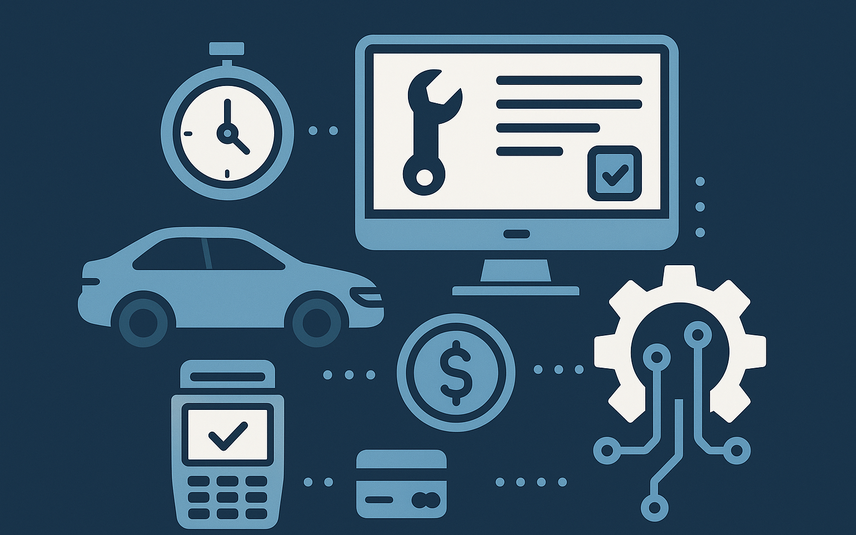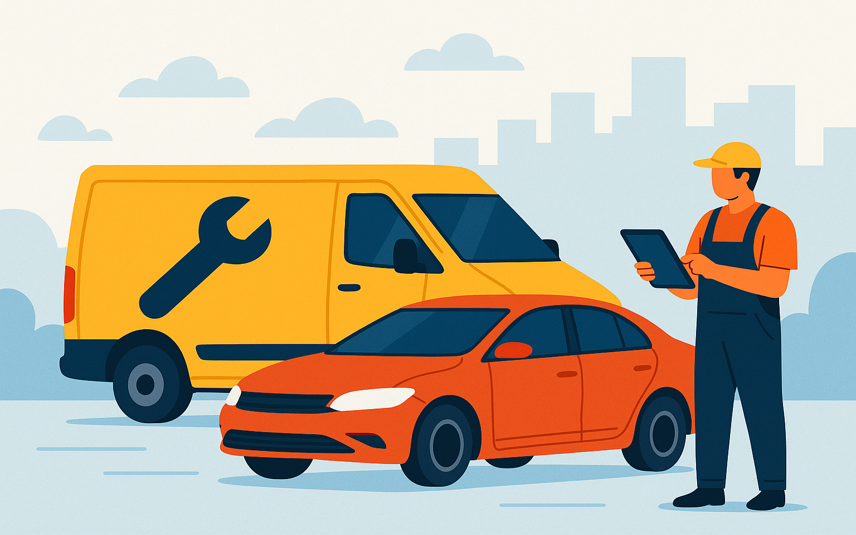What Customers Really Want in a Service Visit (And How to Deliver It)
Modern service customers are no longer satisfied with a simple oil change—they expect more. Speed, Transparency, and Convenience are no longer bonuses; they’re baseline expectations. Unfortunately, many dealerships still focus heavily on internal processes, failing to see the service experience from the customer’s perspective. The result? Frustrated customers, missed opportunities, and weak retention. Let’s break […]

Modern service customers are no longer satisfied with a simple oil change—they expect more. Speed, Transparency, and Convenience are no longer bonuses; they’re baseline expectations.
Unfortunately, many dealerships still focus heavily on internal processes, failing to see the service experience from the customer’s perspective. The result? Frustrated customers, missed opportunities, and weak retention.
Let’s break down what customers really want during a service visit—and how your dealership can improve satisfaction, trust, and long-term loyalty.
What Customers Expect from a Dealership Service Visit
1. Clear Communication Every Step of the Way
One of the most common service complaints? “I never knew what was going on with my car.”
Today’s customers don’t want to chase advisors for updates—they expect proactive communication. From appointment confirmation to check-out, every step of the process should be clearly communicated. Customers want to know when their vehicle is ready, what the issue was, and how much it will cost.
Text messages, email alerts, or even mobile chat integrations help eliminate the guessing game and improve trust. When communication is consistent, customers feel informed and respected— directly impacting satisfaction scores.
2. Transparency on Pricing & Repairs
Nobody likes surprises at checkout. When customers aren’t informed in advance about the repairs needed—or what they’ll cost—they feel blindsided. That kills trust.
Utilizing digital multi-point inspections (MPIs) that incorporate photos and videos helps establish credibility. It’s no longer just the service advisor’s word—it’s visual proof. Combine that with mobile-friendly approval workflows, and you’ll create a transparent, friction-free process.
Customers appreciate knowing exactly what they’re paying for and why. That clarity increases repair approvals, reduces disputes, and boosts overall satisfaction.
3. Speed, Efficiency, and Minimal Waiting
Time is currency. If your check-in process takes too long, if customers are stuck in a waiting room without updates, or if pick-up requires standing in line at the cashier—you’re creating friction that customers won’t forget.
Customers want self-service tools like online scheduling and mobile check-in. They expect notifications when their car is ready, and mobile payment options before they return to the store.
Reducing time spent at your dealership doesn’t just improve efficiency—it creates a smoother, more memorable experience. It motivates customers to return.
4. Personalized Service Touches
Customers don’t want to feel like just another RO number. They want to be greeted by name. They appreciate when you remember their last visit, their preferred advisor, or the fact that they always come in on Friday mornings.
The good news? All of that is in your CRM—you just have to use it. Dealerships that lean into personalization build stronger relationships and deeper loyalty. It shows customers that you’re paying attention. In turn, they’ll reward that attention with repeat visits and higher CSI scores.
How to Deliver a Better Experience
1. Implement Communication Automation
Start by automating appointment confirmations, repair updates, and pickup notifications. Use a service CRM to build these workflows—but don’t stop there. Train your advisors to personalize messages using templates that include the customer’s name, vehicle, and previous visit notes.
This hybrid approach saves time while preserving the human touch, meeting customer expectations for consistent and personalized updates.
2. Use Digital MPIs to Show, Not Just Tell
Digital inspections aren’t just convenient—they’re powerful trust-builders. Every RO should include photos or videos of the issues found, along with transparent pricing and mobile-friendly approvals.
Showing the customer what’s wrong makes it easy for them to say yes, reducing hesitation, improving upsell rates, and increasing confidence. This simple step can drastically improve satisfaction while boosting revenue.
3. Optimize Your Service Lane Process
The experience starts long before the repair. Offer online scheduling with smart load balancing to prevent bottlenecks. Introduce kiosk or mobile check-in to speed up drop-offs. Use express lanes for quick services like oil changes and tire rotations.
These improvements save customers time—and they’ll notice. Even minor delays can sour an otherwise good visit, so removing bottlenecks goes a long way in improving satisfaction.
4. Leverage CRM Data for Personalization
Your CRM holds a wealth of data—tap into it. Review notes from previous visits. Flag VIP or loyal customers for extra attention. Use past behavior to tailor communications or recommend services.
For example, if a customer declined a brake flush last visit, you can follow up automatically during their next appointment. These small touches feel intentional, thoughtful, and personalized—turning a routine visit into a relationship-building moment.
Conclusion
Customers don’t just want their vehicle serviced—they want to feel informed, respected, and valued. From proactive communication to faster check-ins and personalized experiences, small shifts in your process can lead to big improvements in satisfaction.Want to deliver a better experience at every visit?
Schedule a demo with myKaarma and discover how our tools can help enhance customer satisfaction at your dealership.
Recent




